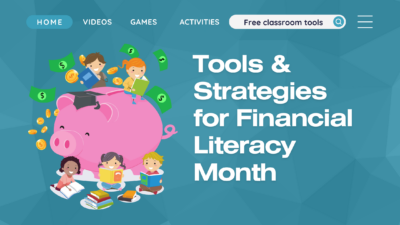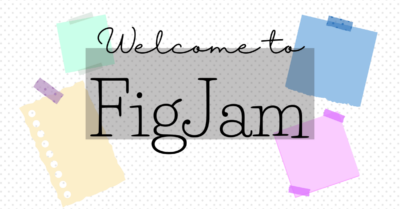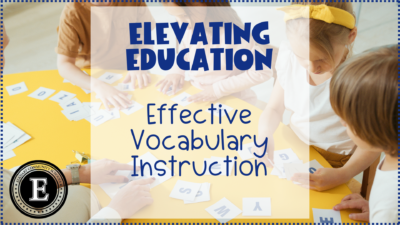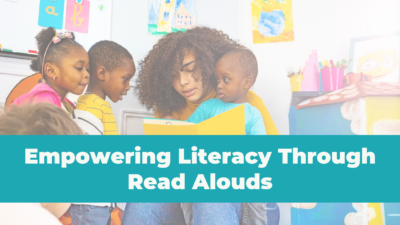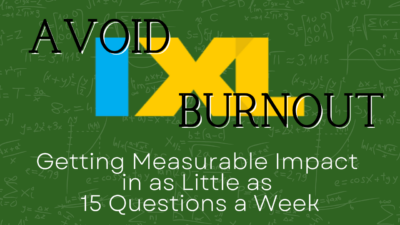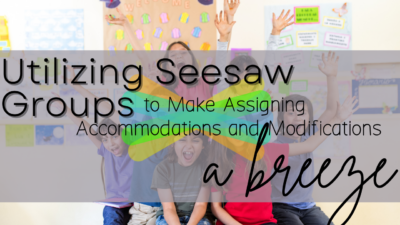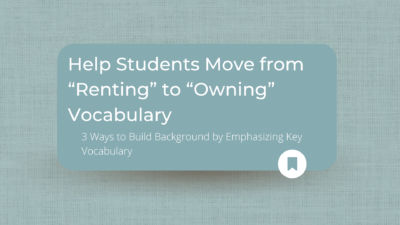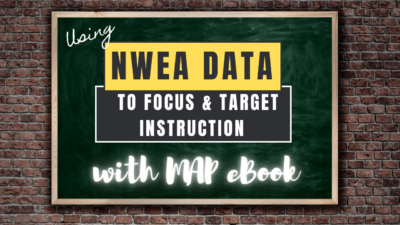Instruction
Empowering Financial Literacy: Tools and Strategies for Every Classroom
Every April is Financial Literacy Month, raising awareness of how important it is to achieve financial literacy and maintain smart money management habits. Learning this early can really ignite today’s generation into future financial savvy adults. EVERFI One of my favorite go-to places for financial literacy is Everfi.com. Everfi is not only free for teachers and K-12 students, but they also offer professional learning resources for teachers and will meet with you one-on-one on how Everfi can best fit into your classroom. In Elkhart, we have Everfi rostered through Clever, so signing in is a breeze. I especially like the...
Introducing FigJam!
Have you heard the (pretty old but might be new to you) news? Google is waiving bye-bye to Jamboard, as of October 2024. So what do we do now? I want to introduce you to FigJam. FigWhat? FigJam is a great alternative to Jamboard, and may actually be a superior platform. Allowing FigMa to introduce itself: “FigJam is an online whiteboard where possibilities turn into plans. Teachers can facilitate collaborative group learning while encouraging active participation from students. It’s best suited for classroom discussions, brainstorms, and group work.” FigJam Education Be sure to get verified for FigJam Education. This will help you...
Elevating Education: Effective Vocabulary Instruction
Let’s delve into a topic that lies at the heart of effective teaching: vocabulary instruction. We all understand its importance—it’s essential for comprehension, expression, and critical thinking. But how do we ensure our instruction isn’t just about exposure but truly facilitates understanding and retention? In this post, we’re taking a deep dive into the art and science of vocabulary teaching. We’ll explore evidence-based strategies, practical methodologies, and insights to enhance your instructional practices. Why Vocabulary Instruction? Teaching vocabulary is essential for fostering academic success and narrowing the pervasive vocabulary gap observed among students. Research indicates stark differences in vocabulary knowledge...
Empowering Literacy Through Read Alouds
If you are connected anywhere to early literacy education right now, I am sure you are aware of the national conversation around aligning current practice to the science of reading. But what is the science of reading and how can it make our students better readers? I am by no means an expert, but have picked up some helpful resources along my learning journey to hopefully help you with the shift you are making in your classroom when you read aloud to students. Reading for Understanding One main aspect behind the science of reading is the idea that reading comprehension...
Supporting English Language Learners by Integrating Digital Content with Discovery Education
As a teacher, one of the biggest challenges you may face is finding ways to support English Language Learners in your classroom. While it can be difficult to meet the diverse needs of these students, one powerful resource that you may want to consider is Discovery Education. Discovery Education is an online platform that provides a wealth of resources and tools to support students’ learning. This platform can be particularly helpful for our EL population, as it offers a range of features that can help build background knowledge, support vocabulary development, and strategies to help students meet content objectives. Building...
Using Seesaw to Support the Four Language Domains: Listening Edition
At Elkhart Community Schools, we have a surprisingly large population of English Language Learners for a small midwest town. Because of this, we have to be very intentional about planning for and utilizing the four language domains to help boost understanding of the English language when providing content to students. In this post, we will focus on practicing the language domain of listening and how we can use Seesaw to help support this domain.
Avoid IXL Burnout: Getting Measurable Impact in as Little as 15 Questions a Week
Are you looking to make the most of IXL? In the post below, we’ll talk about the IXL Effect and how to ensure you are making the most of IXL in the classroom. A bit of heavy reading behind the “IXL Effect” The IXL Effect is a well-known phrase in the IXL community that refers to the impact that IXL can make on student proficiency, specifically when comparing schools that use IXL to those that do not use IXL. IXL conducted research that explored IXL usage across the entire state of Indiana. By examining a large number of schools, they...
Utilizing Seesaw Groups to Make Assigning Accommodations and Modifications a Breeze
If you haven’t checked it out yet, now is the time. This past semester, Seesaw released a new *game-changing* feature, Seesaw Groups. Seesaw groups allow you to assign student work to groups of students with one click. Creating and Assigning to Seesaw Groups Seesaw groups are also super easy to create. From your Seesaw homepage, select the wrench in the top right corner. Under students > Manage Student Groups > Type in a name for the student group > Add Student Group. From there, you can select the students you want in that group, then select the green check mark...
SIOP Feature 5 in Action: Adapting Content with Graphic Organizers
Graphic organizers are an amazing way to adapt content to meet the needs of all of your learners. In this blog post, we will highlight using graphic organizers to help support the lesson preparation feature of adapting content to all levels of student proficiency. Graphic organizers are a great tool that provides students with visual clues to help support text and language that is challenging to understand. They can be used before, during, or after reading. Graphic organizers can also be used specifically for specific subjects and content areas. Seesaw UsersIf you are looking for activities that have graphic organizers,...
Help Students Move from “Renting” to “Owning” Vocabulary: 3 Ways to Build Background by Emphasizing Key Vocabulary
Vocabulary development is crucial to student success, however, overused vocabulary tactics can grow uninspired and tiresome. Read more below to learn about 3 different ways to help move students from “renting” to “owning” vocabulary. Why Teach Vocabulary Development While vocabulary is often closely linked with reading comprehension, vocabulary development is actually crucial to success in all 4 language domains of reading, writing, speaking, and listening. While teaching vocabulary, you ground students in the lesson by previewing language that is important to the content of the lesson, it helps students recognize and interact with vocabulary throughout a lesson and encourages students...
Formative vs Summative
“If you don’t use the results of the common formative assessment to make a difference in student learning, the assessment is summative” (Bailey and Jakicic).
The quote from above is one of the best descriptions for both formative and summative assessments. We are all familiar with the classic definitions but the reason & why are more important than the characterization.
4 IXL Reports to Help Remediate and Extend
Remediation and Extension is essential for any classroom but lack of time, data, and resources makes it difficult. That’s where IXL can help! I will show 4 different ways IXL can help you, but it’s up to you to use it in a meaningful way. In order to have quality data you have to give the Diagnostic and Star Essential skills. Watch the video below to see what the diagnostic looks like and tips on giving it to your students. Once your students completed the diagnostic you can use the reports below to help scaffold and differentiate. 🎥 IXL Diagnostic...
Focused and Targeted Instruction Using NWEA Scores with Free eBook
Are you looking for ideas on how to utilize NWEA data in meaningful ways to inform instruction and put the data to work? Teach. Learn. Grow. blog contributor – Kathy Dyer and Senior Curriculum Specialist for NWEA, John Wood – provide great ideas and techniques for getting the most from MAP Growth data in their free ebook “Using MAP Growth Data to Inform Instruction”. This valuable resource also provides real examples on how you can apply MAP Growth assessment data in your classroom to help improve instruction, set goals, predict proficiency, and even help with parent communication. Check out the...
